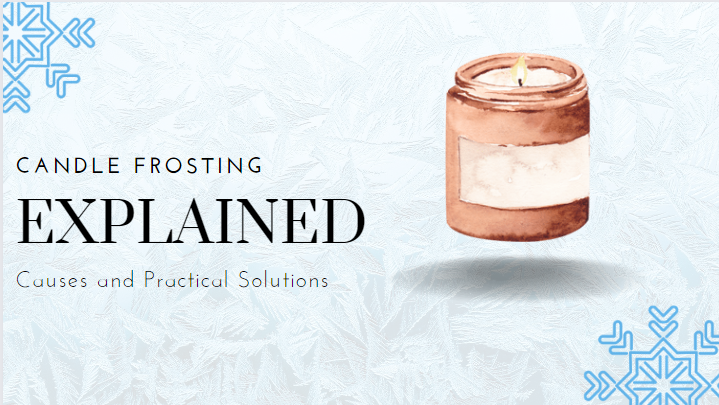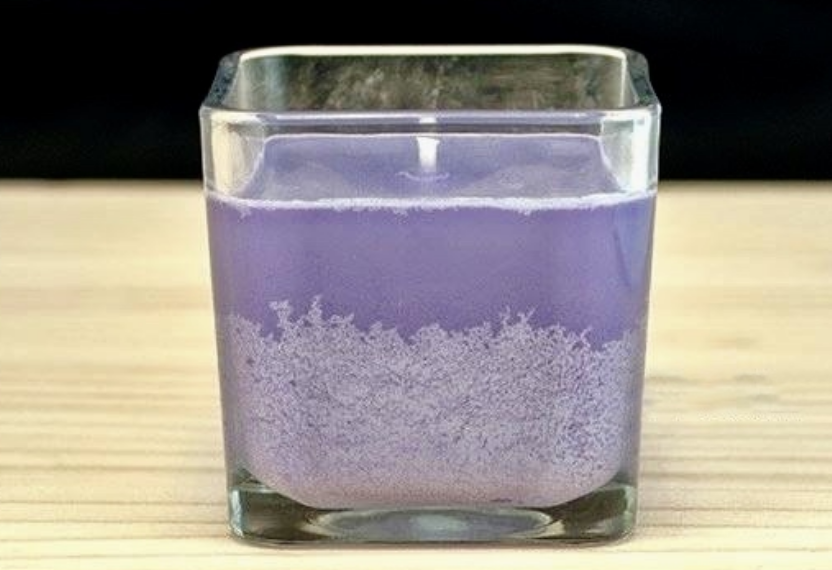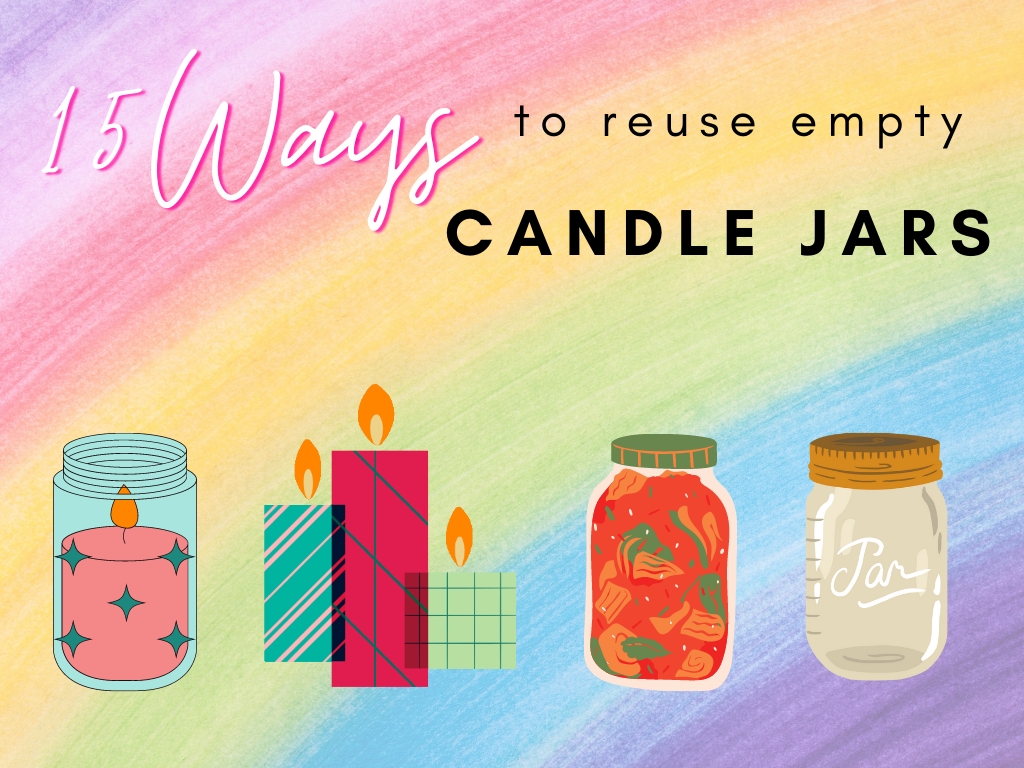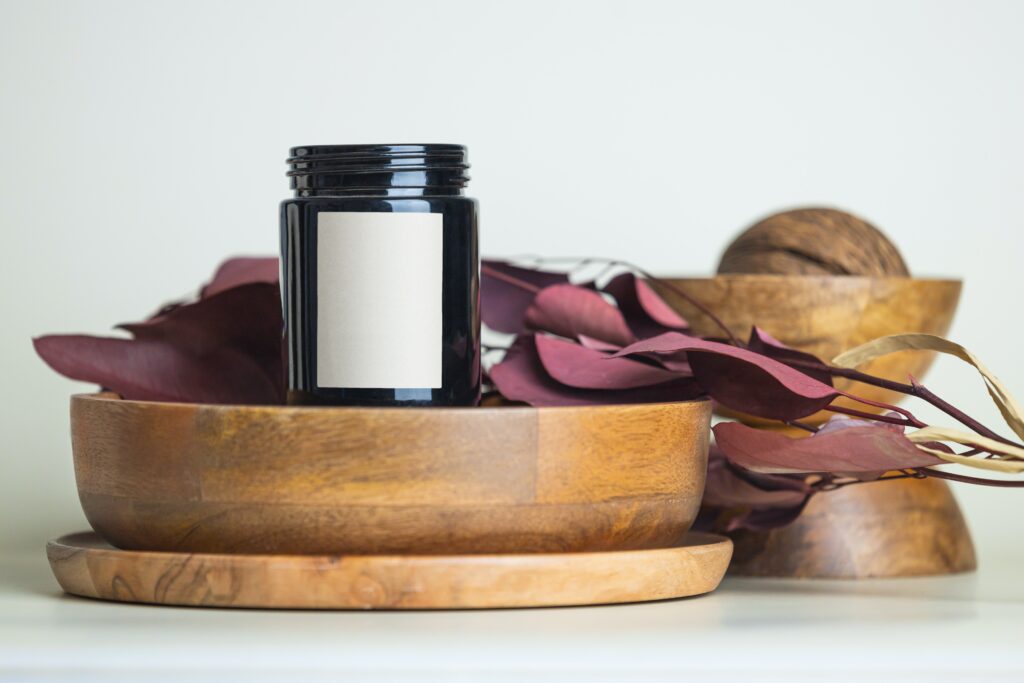Candle Frosting Explained – 4 Causes and Practical Solutions
Candle frosting is a common issue with candles and is caused when the wax on the outside of the candle has cooled too much. This can lead to an unsightly layer of frost on the exterior of your candle which not only looks bad but also prevents any light from escaping the candle. In this article, we explain what causes candle frosting, as well as different solutions you can try out to reduce or eliminate it from happening.

What is Candle Frosting?
Candle frosting is a condition that affects the surface of candles, causing them to develop a white, powdery film. While it may not look very appealing, candle frosting is quite normal and is not indicative of a problem with the candle itself. Many people believe that frosted candles burn more evenly and slowly than non-frosted candles.
There are two main causes of candle frosting: cool temperatures and high humidity. When either of these conditions is present, the warm wax on the surface of the candle begins to cool and condense. This condensation then turns into the white, powdery film that we know as frosting.
While there is no way to completely prevent candle frosting, there are some practical solutions that can help minimize its formation. One solution is to store your candles in a cool, dry place. If you live in an area with high humidity, you can also try storing your candles in an airtight container. Another solution is to avoid burning your candles for long periods in drafty areas. By taking these simple precautions, you can help keep your candles looking their best.
Why do Candle Frost?
Candles are a beautiful addition to any home, and they come in a wide variety of scents, colors, and sizes. While they may seem like a simple decoration, there is a lot of science that goes into making a candle. One important factor in the quality of a candle is the level of frosting.
The frosting is the white, powdery substance that can sometimes be seen on the surface of a candle. It is caused by the presence of crystals on the wax, and it can occur for a variety of reasons. In some cases, frosting is simply a cosmetic issue and does not affect the quality of the candle. However, in other cases, it can be indicative of a problem with the manufacturing process.
Several things can cause frosting on candles. One common cause is when the wax is not cooled properly during production. This can cause impurities to form on the surface of the wax, which will then turn into frosting when the candle is lit. Another common cause is when there is too much fragrance oil added to the wax. This can also cause impurities to form, which will lead to the frosting.
There are a few practical solutions to preventing or removing frosting. Some candle makers will heat the candles a bit to remove the frosting, while others will add a small amount of solvent to the candle to break down the frosting.
Either way, this is best done before adding your fragrance oil or dye. If you are going to attempt removing the frosting yourself, you can try using a hairdryer on low heat to gently warm up the wax without letting it burn.
The goal is to raise the temperature at which the impurities in the wax change from solid to liquid. When that happens, it should be possible for you to simply wipe off any remaining frosting with an old cloth. Unfortunately, if your candle has already been dyed or scented, removing the frosting will not be so easy.
You will need to add a few drops of solvent to your candle, then use a hairdryer on low heat to gently warm up the wax without letting it burn. When it has heated enough you should be able to easily wipe off any remaining frosting with an old cloth.
If you are going to have a professional remove the frosting, they will likely use specialized equipment to get all of it off. After removing the excess frosting they will then dye and scent your candles before delivering them back to you at no extra cost.
One final note about removing frosting: If your candle is frosted for decoration only (i.e. not for branding), this process may damage the surface of your candle.
How to make candle Frosting?
Candle frosting can be a beautiful thing. But it can also be a pain in the neck, especially if you don’t know what’s causing it or how to fix it.
There are two main causes of candle frosting: poor quality wax and improper wick trimming.
Poor quality wax is the most common cause of candle frosting. When the wax is of poor quality, it doesn’t burn evenly, which causes the formation of soot on the sides of the candle. The soot then traps moisture from the air, which leads to condensation and eventually frosting.
Improper wick trimming is another common cause of candle frosting. When you don’t trim your wicks properly, they start to smolder instead of burning cleanly. This causes the formation of soot on the sides of the candle (just like with poor-quality wax), which then traps moisture from the air and leads to condensation and eventually frosting.
Fortunately, there are some practical solutions to both of these problems. For poor-quality wax, try switching to a higher-quality wax or using a double boiler to melt your wax so that it burns more evenly. For improper wick trimming, try using a candle wick trimmer or repositioning your wicks so that they don’t have to travel as far.

How to Avoid Candle Frosting – The Guide
When it comes to candles, there are few things more frustrating than finding that your beautiful new candle has developed unsightly frosting. Candle frosting is caused by the crystallization of the wax, and while it doesn’t affect the quality or burn time of your candle, it can be very off-putting.
So, what can you do to avoid candle frosting? Here are a few tips:
- Buy from reputable brands: One of the best ways to avoid candle frosting is to buy from reputable brands that use high-quality waxes that are less prone to crystallization.
- Store candles properly: Candles should be stored in a cool, dry place out of direct sunlight. This will help to prevent the wax from melting and re-solidifying, which can lead to frosting.
- Burn candles regularly: If you let your candles sit for too long without burning them, the wax can start to crystallize. So, make sure to burn your candles regularly to keep them looking their best.
- These are just a few tips to help you avoid candle frosting. For more information on this topic, be sure to check out our blog post “Candle Frosting and How to Avoid It .”
How to Fix Frosting on candles?
- If your candles have developed frosting, don’t despair! There are a few simple things you can do to fix the problem.
- First, try gently heating the candle with a hair dryer set to low heat. This will often melt the frosting and allow the candle to burn normally.
- If that doesn’t work, you can try carefully scraping off the frosting with a sharp knife. Be careful not to damage the wick in the process. Once you’ve removed the frosting, the candle should burn normally.
- If your candles continue to develop frosting, it may be due to the type of wax being used. Try switching to a different type of wax and see if that helps. Frosting can also be caused by too much fragrance oil being used in the candle-making process. If you suspect this is the problem, try using less fragrance oil next time.
How do get rid of Frosting in soy Candles?
If you’ve ever had a soy candle that’s been frosted, you know how frustrating it can be. Here’s what causes frosting in soy candles, and some practical solutions for getting rid of it.
Frosting in soy candles is caused by the crystallization of the wax. This can happen when the wax is exposed to too much heat or too much cold. The easiest way to prevent frosting is to keep your candles away from extreme temperatures.
If your candles are already frosted, you can try melting the crystals with a hair dryer set on low, or by placing the candle in a sunny spot. If those methods don’t work, you can try scraping off the frosting with a knife.
The frosting is a common problem with soy candles, but it’s easy to prevent and fix. With a little care, your soy candles will look great and give you years of enjoyment.

Conclusion
So there you have everything you need to know about candle frosting and how to prevent it. As you can see, there can be several causes for this problem, but fortunately, there are also several practical solutions.
By taking the time to troubleshoot your candles and find the root cause of the issue, you can ensure that your candles will burn evenly and without any unsightly blemishes.






